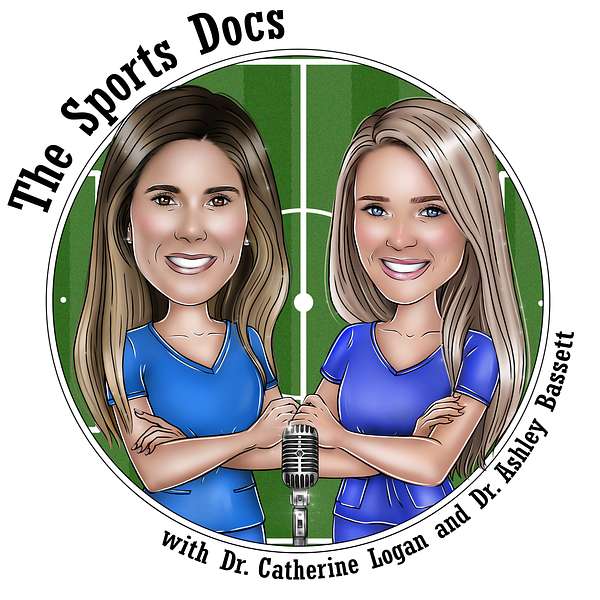
The Sports Docs Podcast
Sports medicine is a constantly evolving field, with hundreds of new articles published each month on the topic. This ever-growing wealth of information can make it challenging to stay updated on the newest approaches and techniques, and to know which data should actually change your practice. Join orthopedic surgeons, Dr. Catherine Logan and Dr. Ashley Bassett, as they chat about the most recent developments in sports medicine and dissect through all the noise.
On each episode of The Sports Docs podcast, the hosts will tackle a specific injury – from ACL tears to shoulder instability – and review the top research from various high-impact journals that month, including The American Journal of Sports Medicine, Arthroscopy: The Journal of Arthroscopic and Related Surgery, Sports Health, Journal of Shoulder and Elbow Surgeons, and more. The Sports Docs will also be joined by experts in the field of sports medicine – orthopedic surgeons, nonoperative sports medicine specialists, athletes, physical therapists, athletic trainers and others – to provide a fresh and well-rounded perspective based on their unique experiences.
The Sports Docs – Dr. Logan & Dr. Bassett – are friends & former co-residents from the Harvard Combined Orthopaedic Residency Program, who went onto esteemed sports medicine fellowships at The Steadman Clinic and The Rothman Institute, respectively. Dr. Logan practices in Denver, CO, and serves as Team Physician for Men's USA Lacrosse & as a Team Physician for U.S. Ski & Snowboard. Dr. Bassett is the director of the Women’s Sports Medicine Center at the Orthopedic Institute of New Jersey and practices across northern NJ, primarily in Morris and Sussex Counties.
Together, they will bring monthly conversations on how to care for athletes of all ages and levels of play, with a healthy mix of cutting-edge science and real-world application.
The Sports Docs Podcast
133: ACLR Outcomes: Factors Associated with RTP and Re-Injury
Today’s episode is kind of an Overtime / Ask The Sports Docs crossover. One of the PTs that Ashley works closely with asked her why some patients do well after ACL surgery and some don’t fare as well, despite the surgery being identical in terms of technique, graft choice, post-op protocol etc.
An article was just published in AJSM this month looking at this, specifically investigating factors that impact outcomes after ACL reconstruction. The article that we are reviewing today is titled “Primary Anterior Cruciate Ligament Reconstruction in Level 1 Athletes: Factors Associated With Return to Play, Reinjury, and Knee Function at 5 Years of Follow-up.” This level 2 cohort study aimed to analyze the outcomes of primary ACLR in level 1 athletes and identify preop and intraop factors associated with RTP, ipsilateral ACL reinjury, contralateral ACL injury, and IKDC score at 5 years post-op.
**
We have also been chatting about this episode offline and discussed an article that was recently published looking at preoperative grit scores and postoperative range of motion after ACL reconstruction. Grit score is another objective measurement that we can obtain preoperatively and perhaps use to guide intervention during post-op recovery.
We actually did an Overtime episode looking at the impact of grit scores on post-op outcomes after ACL reconstruction. That is episode #53 if you want to check it out! But today's second article is titled “Higher Grit Scores Are Associated With Earlier Increases in Knee Flexion Following Anterior Cruciate Ligament Reconstruction With Meniscus Repair in Pediatric Patients.”
It was published in the April 2023 issue of the Journal of Pediatrics. Pete Fabricant and his team at HSS found that patients with grit scores below the 50th percentile undergoing ACLR + meniscus repair have 5 degrees less total ROM at 3 months compared with those with high grit scores. Though 5 degrees might not seem like a lot, quicker motion recovery in patients with high grit may be a leading indicator of these patients likelihood to achieve other post-op milestones and meet criteria for RTS more quickly. This obvious needs future study to see how grit impacts other factors like strength gains, passing RTP assessments etc.